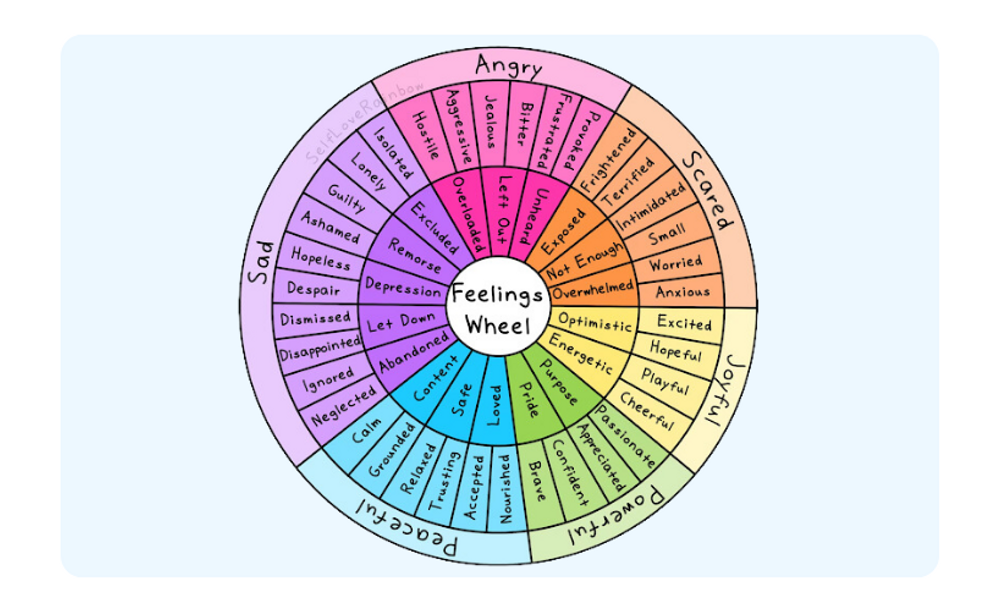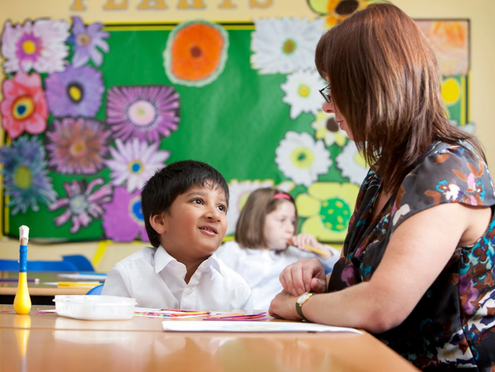It's Children's Mental Health Week, and this year the theme is "My Voice Matters." This theme is all about empowering children and young people by providing them with the tools they need to express themselves. One key tool that all learners need to be able to express themselves is language, and more specifically, the language of empathy and emotions.
In November 2023, Kate Middleton, Princess of Wales, hosted a conference on social and emotional learning (SEL) and delivered findings of new research from The Royal Foundation Centre for Early Childhood. She emphasised the significance of teaching children how to communicate about their emotions and actively supporting initiatives related to early childhood development and mental wellbeing. Prince Louie, aged 5, recently came back from school with a feelings wheel, a tool traditionally used to identify and regulate emotions.
The feelings wheel
The idea of a feelings wheel was originally proposed by Robert Plutchik in 1980 outlining 8 primary emotions. Plenty of variations of the feelings wheel exist, but they are all based on the premise that there are core emotions such as: joy, fear, anger, sadness. Learners can use the emotion wheel as a tool for self-reflection and communication. When someone is struggling to identify or express their emotions, the wheel provides a visual aid to help them pinpoint more precisely what they are feeling. It's particularly useful in promoting emotional intelligence and self-awareness.

A version of the feelings wheel from Self-Love Rainbow
The feelings wheel and literacy: navigating characters' feelings
In any given text learners are reading, whether fiction or nonfiction, using the feelings wheel, learners can convey how characters are feeling or feel towards something in the text.
Let’s look at a portion of text about Jane Goodall.
‘Jane Goodall dedicated her life to studying and understanding the behaviour of chimpanzees. Groundbreaking discoveries included the observation that chimpanzees make and use tools, revolutionizing our understanding of these animals.’
Once learners have read the text and are beginning to think about how a character feels or their attitude towards something, you can navigate them towards the feeling wheel to identify this emotion and then use the language with their partner. Using emotive language in conversation is just as important as identifying the emotion in the first place. This oral use of emotive language helps form a strong foundation for effective communication, helping young learners to express themselves and the feelings of others. The combination of identifying a characters feelings, understanding the correct language to use and being able to articulate this in conversation all contribute towards communication skills, critical thinking, academic success, and personal development.
To help learners work through this process, you might choose to write some language frames on the board to help learners reinforce the oracy aspect of the language. These language frames provide a structured framework for learners to express themselves fluently in speech.
Teacher: How does Jane Goodall feel about Chimpanzees?
Leaner: Jane Goodall feels passionate about chimpanzees.
This can be extended through using further comprehension strategies such as explicit retrieval or asking learners to include the key grammatical concept they are learning that day.
Teacher: How does Jane Goodall feel about Chimpanzees? Extend your answer using a conjunction. Don’t forget to include evidence from the text!
Learner: I know Jane Goodall feels passionate about chimpanzees because in the text it says she dedicated her life to studying their behaviour.
By incorporating social and emotional tools, such as the feelings wheel, into English lessons, learners can develop a deeper understanding of characters' emotions in literature, expand their emotional vocabulary, and engage in creative activities that enhance their reading comprehension skills.
The path to emotional literacy through the feelings wheel
Building on the foundation of understanding characters' emotions through literature, learners can take the next step towards emotional literacy by navigating their own emotions using a feelings wheel. By learning to identify and articulate their feelings, learners are empowered to communicate more effectively about their mental and emotional states. This self-exploration is not just an academic exercise; it's a fundamental aspect of mental health and well-being.
For example, after discussing how Jane Goodall feels about chimpanzees, a teacher might transition to asking students how they feel about something they are passionate about or a recent experience. This could look like:
Teacher: "Think about a time you felt really excited about something. Can you use the feelings wheel to describe that emotion?"
Learner: "I felt excited when I won the science fair. Being excited is like being joyful, but more intense."
In this way, the feelings wheel becomes a bridge between understanding others' emotions and articulating one's own.
Moreover, encouraging learners to navigate their own emotions with the feelings wheel can foster a classroom environment where emotional literacy is valued alongside academic achievement. This approach supports the development of empathetic, emotionally intelligent individuals who are better equipped to face the challenges of the world. It also emphasises that every child's emotional experience and voice is valid and important, reinforcing the message that "My Voice Matters."
Feelings wheels: a gateway to deeper emotional literacy
The feelings wheel is more than just a tool for identifying emotions; it's a gateway to deeper emotional literacy, self-awareness, and the empowering realisation that each individual's voice matters. As learners become more adept at using this tool to explore both literature and their own inner worlds, they build the skills necessary for empathy, resilience, and personal growth, establishing the foundations for their belief that "My Voice Matters."






